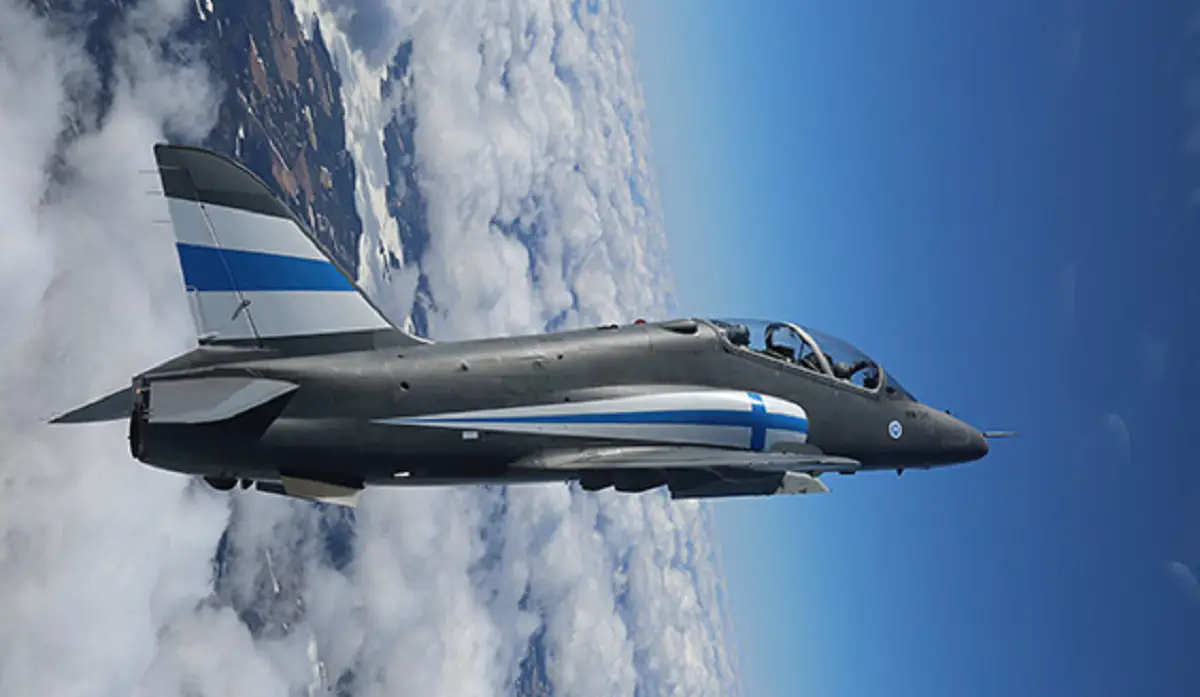Following a comprehensive investigation into an engine-related flight accident, the Finnish Air Force has recently taken significant steps toward reinstating the grounded Hawk Mk51 jet trainers to operational status. The fleet was grounded on May 15, 2023, due to a flight incident caused by engine damage, prompting a thorough assessment and necessary measures to ensure safety. The decision to lift the ban on the Hawk Mk51 fleet comes after meticulous scrutiny and analysis by a dedicated team, led by Lt. Col. Juha Vantila. While the investigation has revealed the likely cause behind the engine damage, not all contributing factors have been fully identified. Consequently, the inquiry persists, involving both the Air Force and the aircraft manufacturer, with an estimated remaining duration of a few more months.
The resumption process for the Mk51/51A model Hawks involves rigorous evaluation and testing at the Air War School before each aircraft is cleared for training use. The test flights for the Hawk fleet involve pushing the aircraft to its limits to assess its performance thoroughly. Stringent measures are in place to manage the heightened risk during these test flights, particularly emphasizing stricter weather limits compared to standard operations. These precautions are pivotal, ensuring a safe return in the event of an engine failure during the tests. Adverse autumn and winter weather conditions had previously delayed the commencement of engine test flight operations, impeding the reintroduction of the Mk51/51A planes. However, a successful engine test flight recently occurred, signaling a gradual return to flight service, contingent on favorable weather conditions.

The BAE Systems Hawk is a British single-engine, jet-powered advanced trainer aircraft. It was first known as the Hawker Siddeley Hawk, and subsequently produced by its successor companies, British Aerospace and BAE Systems. The BAE Systems Hawk, renowned for its role as an advanced trainer aircraft, has a rich history, serving both as a training platform and a cost-effective combat aircraft. Notably operated by the Royal Air Force, the Hawk has found its place among various foreign military operators, showcasing its adaptability and reliability over the years. With a production span until 2020 in the UK and licensing agreements facilitating production in countries like India, the Hawk has seen extensive global adoption, with over 1000 units sold to 18 operators worldwide.
Finland’s association with the Hawk dates back to a significant deal announced in January 1978, paving the way for the Finnish Air Force to receive 50 Hawk Mk. 51s in 1980, built under license by Valmet. The acquisition allowed the Air Force to expand its capacity within the confines of the Paris Peace Treaty of 1947, which imposed limits on first-line fighter aircraft. Subsequent additions and upgrades to Finland’s Hawk fleet, including the purchase of used Hawk Mk. 66s from the Swiss Air Force, demonstrated its adaptability and capability enhancements over time. The Finnish Air Force has equipped its Hawks with various armaments, showcasing their versatility in roles beyond training. These include air-to-air missiles, rocket pods, bombs of multiple types, machine gun pods, and autocannon pods. Moreover, the Midnight Hawks aerobatics team showcases the aircraft’s prowess in aerial displays.















